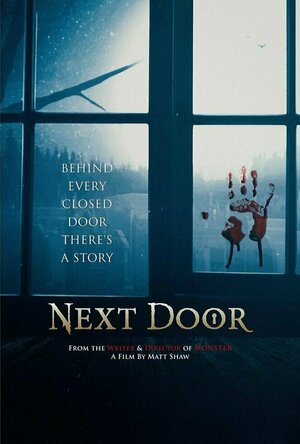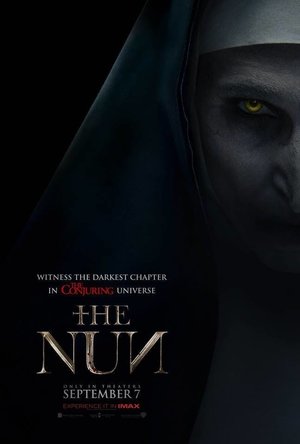
casadeferro.com
Podcast
who is ricardo ferro? Ricardo is also known as DJ Ferro since his debuts in the world of djing,...
Lyndsey Gollogly (2893 KP) rated Next Door in Books
Jun 10, 2021
Kindle
Next Door
Compiled by Matt Shaw
Once read a review will be written via Smashbomb and link posted in comments
From the mind behind "MASTERS OF HORROR" comes a new horror anthology to keep you up at night!
Whilst Matt Shaw is busy producing, writing and directing the feature film NEXT DOOR he decided to put together a horror anthology of the same name, and with the same theme as the motion picture. None of the stories in this collection feature in the film; the two products are completely separate other than the central concept of exploring who does live NEXT DOOR to us?
Given the fact these are some of the biggest names in horror, you can bet that whomever is living next door probably won't be the friendliest of characters...
The year is 2019 and technology has come so far that we spend more time staring at our mobile devices, and screens in general, than getting to know our next door neighbour. Gone are the days of knowing everyone who lives on the same street, or in the same village. Instead we leave our houses, avoid eye-contact or give the bare minimum of grunts to those we see and go about our daily lives without a care for anyone else. No more street parties, no more kindly neighbours checking in on you, no more Christmas cards from the little old lady who lives across the street. There's only "us" and our technology.
This anthology takes a look at who lives NEXT DOOR and what secrets they may be keeping. And who knows, maybe it will serve as warning to you that, really, you should be paying attention to those living close-by. After all, Fred West was someone's neighbour once...
Featuring stories by:
Tim Lebbon
Shaun Hutson
Ryan C. Thomas
Jeremy Bates
David Moody
Guy N. Smith
Matthew Stokoe
Justin Woodward
Gary McMahon
Rich Hawkins
Jim Goforth
Matt Shaw
1. A Family-Friendly Neighbourhood by Ryan C Thomas
This was actually quite funny and sweet in a gruesome clever way. All the toys turning into little knife wielding creepy thing only to find out they are their kids souls! They just want to be together 😂
2. Final Feast by Guy N. Smith
Quick little story of the cannibal next door! I loved it!
3. Insurgents by Rich Hawkins
A story of a war ruined mind, a soldier dealing with his demons. Well written just not my normal read.
4. Mirror Image by David Moody
A couple move into a new house with an extra handy neighbour. I enjoyed this one funny how my husband is so crap at DIY too 😂😂
5. Neighbour Hood by Tim Lebbon
Omg this has to be the creepiest one so far and the whole reason I never use my attics’!!!
6. Dinner Date by Jeremy Bates
A bit slower than the others think I just got a little bored. Never accept dinner invitations before getting to know the guy no matter how hot he is! Silly girl!
7. Why Does Randolph Draw by Matthew Stokeoe
Got to be honest I didn’t finish it I just got so bored after page 5! Just wasn’t catching me.
8. Saturday Night Whiskey by Justin M.Woodward
This was really god and well put together a kids last cry for help from his dodgy uncle!
9. Sixteen by Jim Goforth
This felt so rushed even for a short story! Although it’s a good lesson of don’t get involved with swinging neighbours 😂
10. Pornography by Matt Saw
Haha she didn’t see that coming
11. Somewhere in Here by Gary McMahon
This was one creepy ass story and for one so short I’m throughly creeped out!!
12 By Darkness Hidden by Shaun Hutson
This was pretty good a urban legend type story. Villages can be super strange places.
I really enjoyed this compilation got some great new authors added to my list too.

CHEERZ: Photo Printing
Photo & Video and Entertainment
App
Cheerz: Photo albums, photo prints, canvas, photo frames… Print the best photos from your iPhone! ...

Pocket Kamasutra - Sex Positions and Love Guide
Catalogs and Book
App
Do you like sex? Do you want to be better at it? Then you’ve come to the right place! Pocket...

Pocket Kamasutra - Sex Positions, Love Guide Lite
Catalogs and Book
App
Do you like sex? Do you want to be better at it? Then you’ve come to the right place! Pocket...
Hazel (1853 KP) rated He Walks Among Us: Encounters with Christ in a Broken World in Books
Dec 17, 2018
Richard Stearns is the president of World Vision United States who, along with his wife Reneé, regularly visits the poorer countries of our world to see the ways the charity is helping to change people's lives. <i>He Walks Among Us</i> is a compilation of short thoughts and observations (two-to-three pages, including photographs) they have both had while conducting their work. As they alternate the writing, we are given opinions and experiences that we may be able to relate to our own. As Richard is the president of the organisation, he can give an insight into the way World Vision works, however, he can also express his opinions as a father, grandfather and believer in Christ. Reneé is also a World Vision worker, but due to her nature, gives a more maternal impression of the scenes she witnesses.
The individuals written about in this book come from all over the world. Most are located in Africa, but there are also similar stories in Asia, South and North America, and even Eastern Europe. The terrors these people have faced are shocking (AIDs, war, sexual abuse, natural disasters etc), but each family has been aided in some way by World Vision and their donors.
The purpose of <i>He Walks Among Us</i> is not to promote World Vision, but to encourage us to let God and Jesus into our lives. Richard and Reneé assume their readers are Christians, however, they realise that being a Christian does not equate to fully accepting God's plans. The victims of war, rape, and poverty mentioned have also been touched by Jesus. Many did not know him before World Vision came into their lives, but they have now been transformed through the power of his love - although their situation may not have significantly improved.
The actual stories used to illustrate the work of World Vision are only brief mentions, providing the bare bones of the situations. What Richard and Reneé have focused on is linking these lives, their lives and our lives to passages from the Bible. Either taken literally or metaphorically, the pair manage to relate everything to the actions and fates of a number of key Biblical characters. This emphasises that Our Lord is walking among us, giving life, peace, hope and steadfast faith.
<b>Ideas</b>
Giving someone new hope or purpose in their life can be related to Jesus raising Lazarus from the dead. Whether people are literally dying, or on the edge of hopelessness and despair, improving their situation can turn their lives around.
The donors and workers at World Vision are like the Good Samaritan in Jesus' parable. We do not know these people, know their religion or circumstances, yet we send money and aid. To do nothing would make us the Priest or Levite in the story.
David was only a young boy when he had to face Goliath, yet, against all odds, he defeated him. The children mentioned in this book are similar to David. They each have their metaphorical Goliath's: poverty, illness, loss of parents, war, hunger etc, but with God working through us, these can be overcome.
<b>Noteworthy Bible Verses</b>
Each chapter of the book begins with a Bible verse, and often more are included within the text. Here are a few that really relate to the work of World Vision and the ways in which we can involve ourselves:
Philippians 4:12-13
Luke 21:3-4
Luke 6:20-21
Psalm 23:4
<b>Statistics</b>
23 million people in sub-Sahara Africa are suffering from HIV.
In Soviet-controlled Georgia, churches were banned. Some villages are only just seeing their first church in over 400 years.
20 thousand children under the age of 5 die every day.
Every 4 seconds a child under 5 dies.
Over 2 billion people in the world are living on $2 or less a day.
1 billion people have no access to clean drinking water.
41% of the population in Niger have no clean water.
<b>Citations</b>
Helen Keller: "So much has been given to me, I have no time to ponder over that which is denied."
Oswald Chambers: "The great hindrance in spiritual life is that we will look for big things to do. Jesus took a towel ... and began to wash the disciples' feet."
Mother Theresa: "I am a pencil in the hand of a writing God who is sending a love letter to the world."
C.S. Lewis: "Humility is not thinking less of yourself but thinking of yourself less."
<b>Other Mentions</b>
Hymn - Frances R. Havergal, <i>Take my Life and let it be.</i>
Film - <i>Pushing the Elephant</i>

Kostas Bezos and the White Birds by Kostas Bezos and the White Birds
Album Watch
music merch Kostas Bezos and the White Birds by Kostas Bezos and the White Birds Share /...
Gareth von Kallenbach (980 KP) rated The Nun (2018) in Movies
Jul 2, 2019
The Nun begins with two nuns who are attempting to destroy an evil being that has cursed an abbey in a small Romanian village for hundreds of years. After a young man who goes by the name Frenchie (Jonas Bloquet) discovers one of the nuns has hung herself, the Vatican summons Father Burke (Demián Bichir), who is known for his special skills in exorcisms and Sister Irene (Taissa Farmiga), a young nun-in-training to investigate the matter. With Frenchie as their guide, they travel to the abbey to uncover the mysteries of the nun’s suicide.
The Nun reintroduces us to a familiar demonic figure that was originally introduced in The Conjuring 2. Sadly, this is where the similarities to the other Conjuring films end. The Nun has its share of jump scares, but the entire film seems to be a compilation of various horror tropes including everything from crosses turning upside down to using holy water to get rid of demons. All the typical exorcism movie elements are there, but none of them really add any context to the story or answer any questions as to why the priest and nun were sent to investigate the suicide. There is no discernable path that the characters take to unravel the mystery, and it attempts to build suspense only to “Hollywood-up” the ending. They sacrificed suspense and mystery and replaced it with monster filled battles and cheesy one-liners. Instead of beautifully haunting ghosts and demons we got what I could only describe as nun-mummies which can now be taken down with shovels and shotguns. A shotgun was not part of Father Burke’s exorcism arsenal but towards the end of the movie you start to think maybe that should have been his weapon of choice all along (who needs a cross and holy water, when you have your trusty 12-gauge).
The setting is as beautiful as it is creepy, and it’s hard not to wonder how they could take such an amazing setting and dumb it down. The Nun herself is particularly creepy and the characters at first glance appear to be interesting which is why it’s so disappointing that the movie feels so much like a missed opportunity. The pacing of the movie is incredibly slow as well, with all the buildup of the investigation most of the time you are just waiting for something to happen. To make it even worse, most of the buildups lead the audience down a path of confusion and not only raise more questions that will never be answered, but also destroy any believability of the story.
Ultimately, fans of The Conjuring franchise will likely leave disappointed and with even more longing for The Conjuring 3 to be released. The movie lacks much of the suspense and outright terror that the previous movies in the series were well known for and ultimately feels like a spinoff movie that lacks any real connection to the movies preceding it. The Nun isn’t a terrible movie, and I didn’t leave feeling as though I had completely wasted an hour and a half of my time, it just really doesn’t do anything to break new ground or move the franchise along in any meaningful way. While there are parts of the movie that will have you jump, the reality is, that the scenes following these moments will keep you bewildered and likely cause you to forget what made you jump in the first place. It has some interesting concepts, but nothing that hasn’t been done better in similar movies before it. In the end it’s a movie that people will not likely hate but will not feel satisfied with either. I certainly wouldn’t recommend paying full price to see it, but it may be worth the Saturday matinee price or watching it when it comes to Blu-ray. If you want a good ghost or demon movie to get you in the Halloween spirit, this isn’t it. You’d be much better off watching the spectacularly classic Poltergeist or The Exorcist if you really want to be scared out of your wits.
What I liked: The setting and atmosphere, The Nun herself was pretty freaky
What I liked less: Disjointed story, Too many unanswered questions, Overall “meh” feeling


